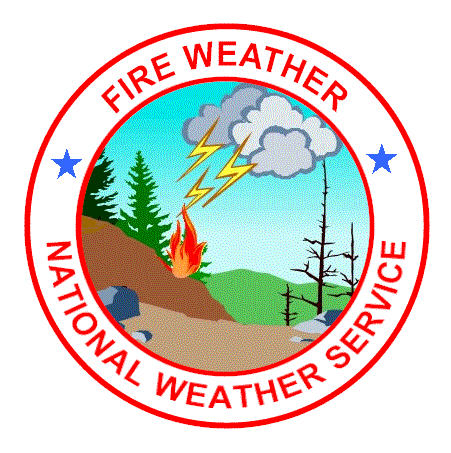 |
Central Alabama Fire Weather Support
|
| Fire Weather - Frequently Asked Questions |
|
What is fire weather?
Fire weather is the use of meteorological parameters such as relative humidity, wind speed and direction, cloud cover, mixing heights, and soil moisture to determine whether conditions are favorable for fire growth and smoke dispersion. The fire weather products we issue such as the Fire Weather Planning Forecast, Fire Weather Watches, Fire Weather Warnings, and Spot Forecasts are generally intended for land management agencies in our area such as the Alabama Forestry Commission (AFC) and the United States Forest Service (USFS). These products provide meteorological data which help these agencies make decisions relating to fire weather, such as when to execute controlled burns and when to expect a higher probability of wildfires.
|
|
What is a Red Flag Warning? Should I be concerned? What about a Fire Weather Watch?
The criteria for the issuance of a Red Flag Warning varies from state to state. The National Weather Service in Birmingham only provides fire weather services for our counties in Central Alabama.
In Alabama, there must be a combination low relative humidity (less than 25%), gusty winds (sustained 20-foot winds ≥15 mph or gusts ≥20 mph), and a Moderate Risk for Significant Fire Potential issued through the National Interagency Coordination Center.
In 2025, KBDI (indices equal to or exceeding 500) was replaced by Significant Fire Potential, all time restrictions were dropped, and wind gusts were factored into the criteria along with sustained winds.
When a Red Flag Warning is issued by the National Weather Service, outdoor burning is strongly discouraged. The state of Alabama may issue a "Fire Alert", which means the number of burning permits issued will be restricted to persons who have burning experience and exceptional control equipment.
A Fire Weather Watch can be issued when there is a potential of Red Flag conditions during the next 12 to 72 hours.
|
|
Examples of Significant Smoke/Fire Weather Events
A significant event was the 'Big Turnaround' and 'Bugaboo' wildfires, which burned almost 500,000 acres of land in Georgia and Florida from April until June of 2007. Smoke from these two wildfires affected the air in cities throughout the southeast U.S. The first "bout" of smoke across our area occurred on Monday, May 14th and Tuesday, May 15th, with smoke reducing visibilities as low as 2 miles on the 15th across the area. There was another significant plume of smoke that moved across the area on Tuesday, May 22nd and Wednesday, May 23rd, with visibilities dropping down again across the area to as low as 2 miles. This was due to the clockwise flow of winds around a high pressure system centered to our northeast.
 |
| The above visible satellite image from 8:15 AM on May 23rd shows smoke streaming from the wildfires over Southeast Georgia and Northeast Florida around high pressure centered off the East coast. The most dense plume of smoke extends from near Valdosta, Georgia, through Montgomery, AL and the Shoals area. 1000-850mb streamlines are overlayed on the satellite image showing the mean wind flow in the lower layer of the atmosphere. Click on the image to enlarge it. |
|
|
Is it uncommon for this area to be affected by smoke from fires as far away as the ones in SE Georgia and NE Florida?
It actually isn't that uncommon for smoke from wildfires to travel that far of a distance. There have been many occasions in the past when smoke from fires as far away as Canada or Mexico have caused hazy conditions in the Southeast. In a majority of these cases, the smoke was not dense enough to be smelled this far away. More prolific wildfires are more common west of the Rocky Mountains in the western United States than they are in the eastern United States, so central Alabama doesn't see dense smoke (similar to what we have seen on recent occasions) as often as other areas of the country.
|
|
How do wildfires start?
Natural wildland fires are generally caused by lightning, which strikes the earth an average of 100 times each second and has caused some of the many wildland fires in the U.S. Unfortunately, the primary cause of wildfires is human activity. Two of the most common ways wildfires start in Alabama is the careless debris burning and arson.
|
|